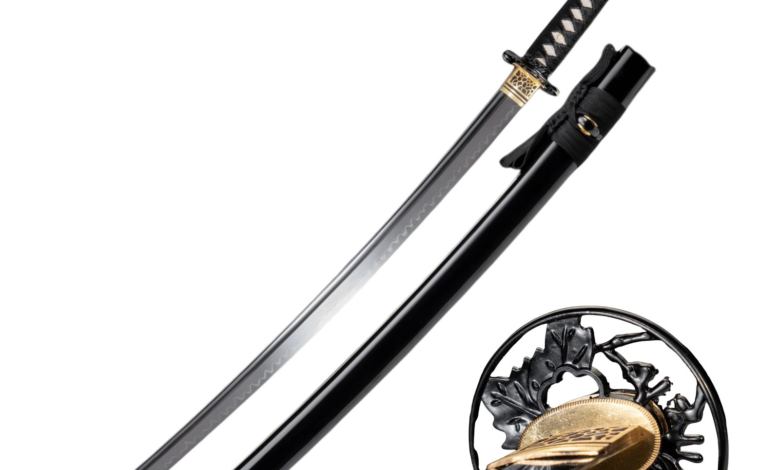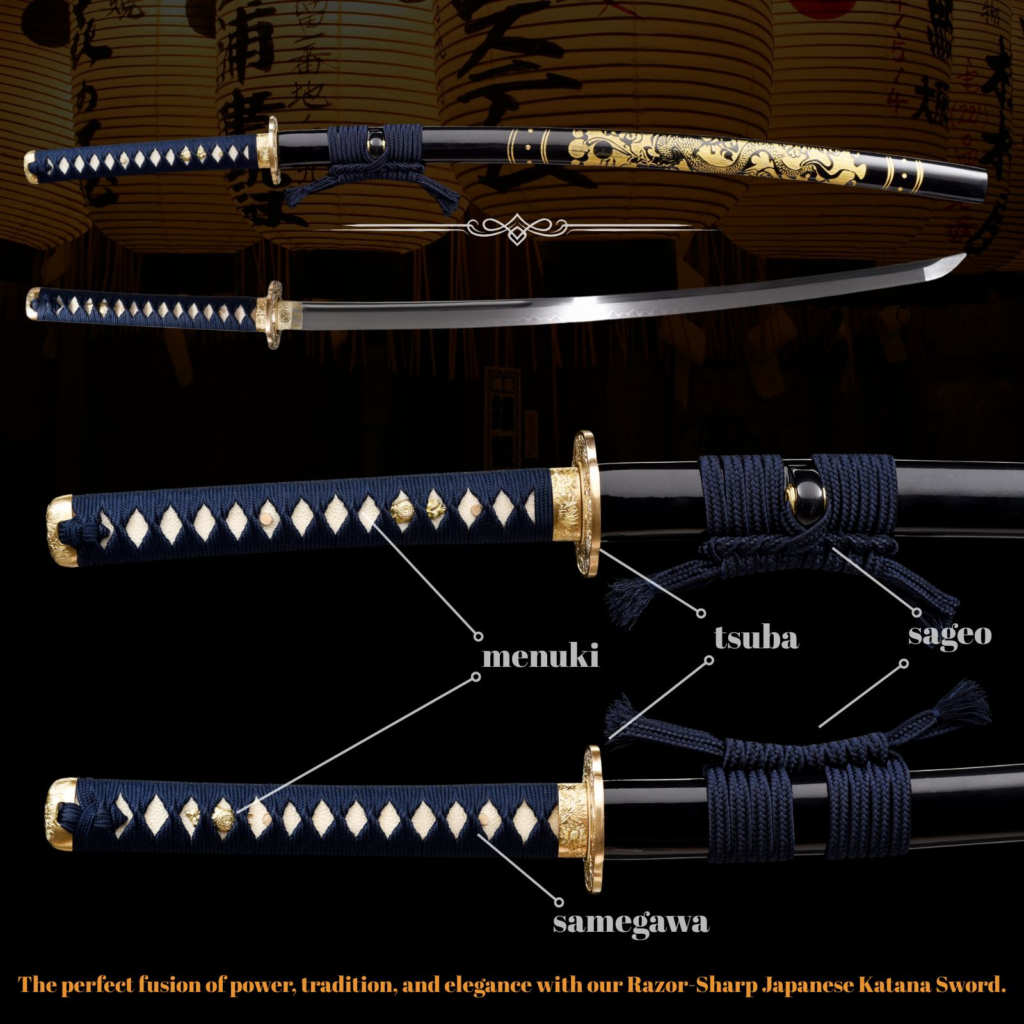What is the Strongest Material for a Katana Sword?

The katana stands as one of history’s most revered weapons, a masterpiece that embodies centuries of Japanese craftsmanship and warrior tradition. From the legendary Masamune swords of medieval Japan to the modern samurai swords available today, these Japanese swords continue to captivate martial arts enthusiasts, collectors, and history buffs alike.
When examining what makes a katana truly exceptional, the material selection emerges as a critical foundation. The strength of a Japanese sword depends not merely on the type of steel used, but on the intricate interplay between traditional materials, forging techniques, and the master swordsmith’s skill. Whether you’re seeking a functional blade for martial arts training or considering a sword for sale as a collector’s piece, understanding the materials behind these legendary weapons reveals the profound artistry that transforms raw steel into cultural heritage.
The quest for the strongest katana material has evolved over centuries, from the sacred tamahagane steel forged in ancient furnaces to modern high-carbon alternatives that push the boundaries of metallurgical science. This exploration examines both traditional and contemporary approaches to katana construction, revealing how master craftsmen balance strength, flexibility, and cutting performance to create blades worthy of the samurai legacy.
Traditional Materials: Tamahagane Steel
Tamahagane steel represents the heart of authentic Japanese sword making, a material so revered that its production process has remained virtually unchanged for over a millennium. This traditional steel emerges from the tatara furnace, where iron-bearing sand (satetsu) and charcoal undergo a grueling 72-hour smelting process under the watchful eye of master craftsmen.
The resulting tamahagane contains varying carbon concentrations throughout its mass, creating a complex material that demands exceptional skill to transform into a functional blade. Master swordsmiths carefully select pieces with different carbon contents, separating the high-carbon hagane (for the cutting edge) from the medium-carbon shingane (for the core) and low-carbon kawagane (for the outer layers).
What makes tamahagane extraordinary lies in its unique microstructure. The traditional smelting process creates minute inclusions and variations that contribute to the steel’s legendary toughness. Unlike modern steel production, which aims for uniformity, tamahagane’s controlled inconsistencies provide the flexibility needed to absorb impact without catastrophic failure.
The folding process, often romanticized in popular culture, serves a crucial metallurgical purpose when working with tamahagane. Through repeated folding and forge-welding, smiths homogenize carbon content, eliminate impurities, and refine the grain structure. This labor-intensive process can involve up to sixteen folds, creating thousands of microscopic layers that contribute to the blade’s strength and distinctive hada (grain pattern).
Differential hardening, known as yaki-ire, represents the final transformation of tamahagane into a functional blade. By applying clay mixture to the spine before heat treatment, smiths create the famous hamon (temper line) while achieving the ideal combination of a hard cutting edge and flexible spine. This technique produces a blade capable of maintaining razor sharpness while absorbing the shock of combat.
Modern Alternatives
Contemporary katana makers have access to sophisticated high-carbon steels that offer predictable properties and consistent quality. These modern materials, including 1060, 1095, and specialized tool steels, provide alternatives that can match or exceed traditional tamahagane in specific performance metrics.
High-carbon steels like 1095 contain approximately 0.95% carbon, placing them in the ideal range for blade construction. This precise carbon content allows for exceptional hardness when properly heat-treated, often achieving Rockwell hardness ratings of 60-62 HRC. The uniformity of modern steel production ensures consistent performance throughout the blade, eliminating the variations that make tamahagane challenging to work with.
Advanced alloy steels introduce additional elements such as chromium, vanadium, and molybdenum to enhance specific properties. These additions can improve corrosion resistance, grain refinement, and overall toughness. Some modern samurai sword makers utilize steels originally developed for industrial cutting tools, adapted for blade construction through careful heat treatment protocols.
The advantages of modern materials extend beyond mere performance metrics. Predictable behavior during heat treatment allows contemporary smiths to achieve consistent results, while uniform composition ensures reliable edge retention and durability. Cost considerations also favor modern steels, making functional katana more accessible to martial arts practitioners and collectors.
However, these benefits come with philosophical considerations. Traditional Japanese sword enthusiasts often view modern materials as lacking the spiritual connection inherent in tamahagane. The ancient steel carries with it the accumulated knowledge of generations, while modern alternatives, despite their technical superiority, may feel disconnected from the cultural heritage that defines authentic Japanese swords.
The choice between traditional and modern materials often reflects the intended purpose of the blade. Functional katana designed for cutting practice or martial arts training may benefit from the predictable performance of modern steels. Conversely, collectors seeking authentic cultural artifacts typically prefer the traditional approach, accepting the challenges that come with working tamahagane.
The Role of Craftsmanship
Material selection represents only the foundation of katana strength; the master swordsmith’s skill transforms raw steel into a living blade. Even the finest tamahagane remains merely potential energy until shaped by centuries of accumulated knowledge and individual artistry. The relationship between smith and steel develops over decades of practice, where subtle variations in temperature, timing, and technique create profound differences in the finished blade.
Heat treatment stands as the most critical phase in katana construction, where the smith’s expertise determines whether the blade achieves its full potential. The precise temperature control required during normalization, hardening, and tempering cannot be replicated by modern equipment alone. Master craftsmen rely on visual cues—the color of heated steel in different lighting conditions, the movement of the flame, and subtle changes in the metal’s appearance—to guide their decisions.
The forging process itself demonstrates the profound impact of craftsmanship on material properties. Proper hammer technique creates the ideal grain flow within the steel, aligning the crystalline structure to optimize strength along the blade’s geometry. Each strike must be measured and purposeful, gradually shaping the steel while maintaining its integrity throughout the transformation.
Polishing, often misunderstood as merely aesthetic work, actually represents the final refinement of the blade’s cutting geometry. Master polishers spend weeks carefully removing microscopic amounts of steel, revealing the hamon while creating the precise angles necessary for optimal cutting performance. The relationship between blade geometry and cutting ability requires intimate knowledge of both metallurgy and practical application.
Traditional Japanese sword makers undergo lifelong apprenticeships, learning not just techniques but developing the intuitive understanding necessary to adapt to each piece of steel’s unique characteristics. This accumulated wisdom cannot be replicated through technology alone, which explains why authentic handmade katana continue to command respect despite advances in materials science.
Maintenance and Care

Preserving a https://katanaswords.co.uk/katana’s swords strength requires dedicated maintenance that honors both the blade’s material properties and its cultural significance. Proper care extends far beyond simple cleaning, encompassing practices that maintain the steel’s integrity while preventing deterioration that could compromise the sword’s structural strength.
Regular oil application prevents corrosion that can weaken the blade over time. Traditional choji oil, derived from cloves, provides excellent protection while remaining compatible with the steel’s properties. The oil should be applied sparingly using traditional washi paper, which won’t scratch the polished surface. Remove excess oil completely, as accumulation can trap moisture and lead to localized corrosion.
Storage conditions significantly impact long-term blade integrity. Katana should be stored horizontally with the edge facing upward, preventing oil from settling into the hamon and potentially causing differential corrosion. Climate control becomes crucial, as temperature and humidity fluctuations can stress the steel and potentially crack the blade. Traditional storage methods using wooden stands allow air circulation while providing stable support.
Inspection rituals serve both practical and ceremonial purposes. Regular examination of the blade surface reveals early signs of corrosion, chips, or other damage that could compromise structural integrity. The inspection process also maintains the owner’s connection to the blade, fostering the respectful relationship that traditional Japanese culture demands.
Professional maintenance becomes necessary when issues exceed basic care capabilities. Qualified practitioners can address minor chips through careful resharpening, while more significant damage may require specialized restoration techniques. However, improper maintenance attempts can irreversibly damage valuable blades, making professional consultation essential for significant issues.
Forging the Future of Blade Excellence
The quest for the strongest katana material reveals a fascinating intersection of tradition, science, and artistry. Tamahagane steel, forged through ancient methods, continues to represent the pinnacle of authentic Japanese sword making, carrying within its structure the accumulated wisdom of centuries. Modern high-carbon steels offer technical advantages and accessibility, making functional samurai swords available to contemporary practitioners while pushing performance boundaries.
The true strength of any katana emerges from the harmonious relationship between material selection and masterful craftsmanship. Whether working with traditional tamahagane or modern steel alternatives, the swordsmith’s skill remains the determining factor in creating blades worthy of their legendary reputation. This balance between innovation and tradition ensures that Japanese swords continue evolving while maintaining their cultural essence.
For those seeking to own these remarkable weapons, whether for martial arts training or collection, understanding material properties provides the foundation for informed decisions. The strongest material for your katana depends ultimately on intended purpose, personal philosophy, and connection to the profound cultural heritage these blades represent. Each authentic Japanese sword, regardless of its steel origin, carries forward the legacy of warriors and craftsmen who understood that true strength emerges from the perfect marriage of material, technique, and spirit



